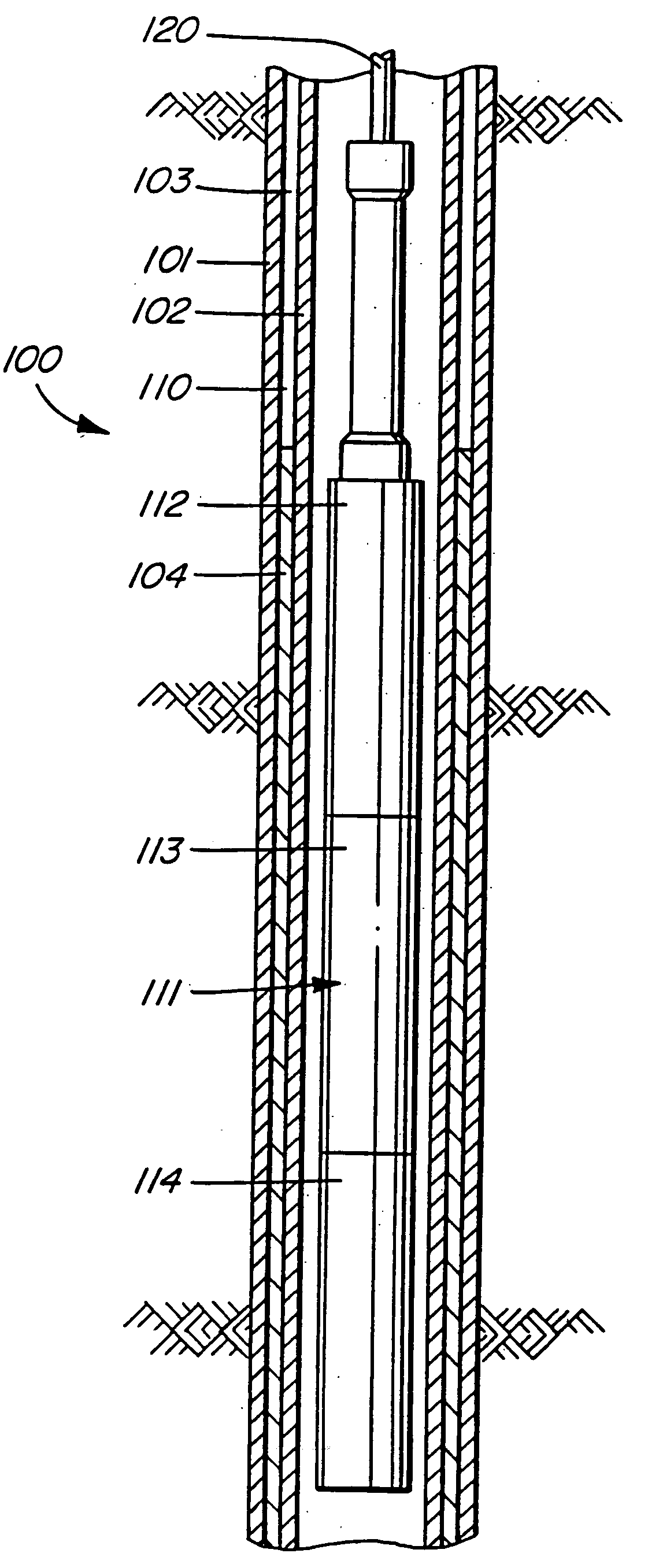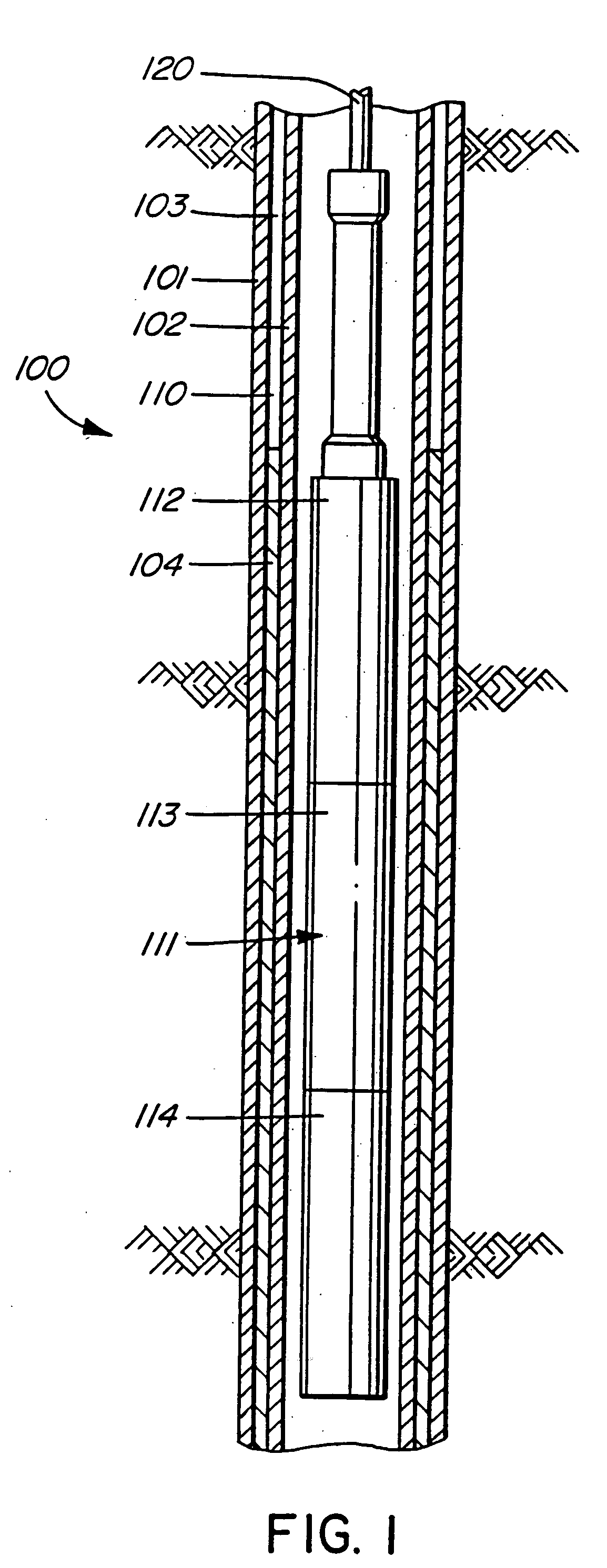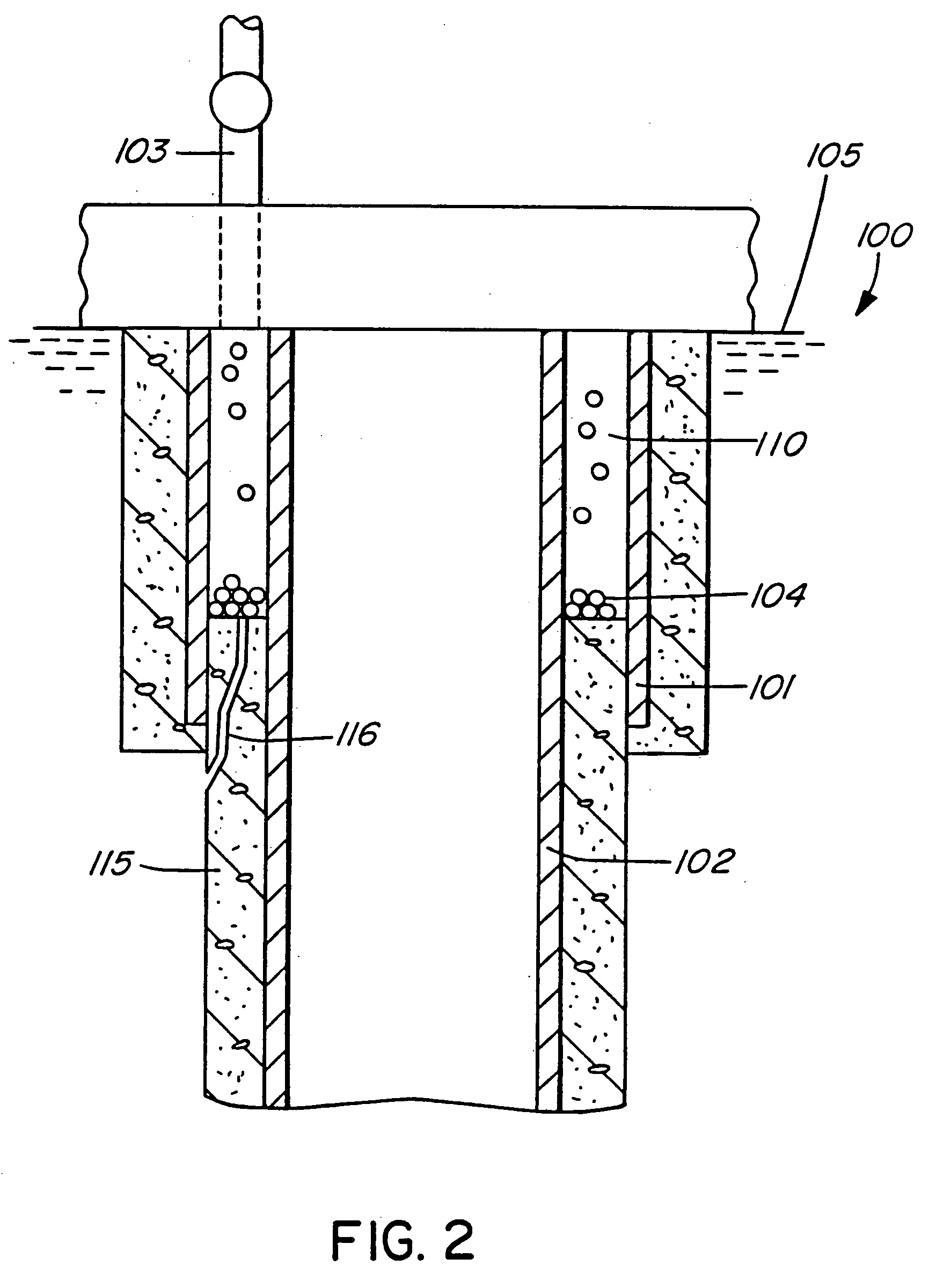Oil and gas well alloy squeezing method and apparatus
a technology of alloy squeezing and gas well, which is applied in the direction of cleaning apparatus, fluid removal, insulation, etc., can solve the problems of compromising well safety, environmental problems, and often leakage of shallow gas through the casing cement used in well completion, and achieve high viscosity
- Summary
- Abstract
- Description
- Claims
- Application Information
AI Technical Summary
Benefits of technology
Problems solved by technology
Method used
Image
Examples
Embodiment Construction
[0035] Referring now to the drawings, the surface and production casings of an oil or gas well generally illustrated at 100 are illustrated at 101, 102, respectively. The outside or surface casing 101 extends from the surface 105 (FIG. 2) of the formation downwardly and the production casing 102 extends downwardly within the surface casing 101. An annulus 110 is formed between the production and surface casings 101, 102, respectively. It will be appreciated that FIG. 2 is intended to diagrammatically illustrate an offshore well while FIG. 3 is intended to diagrammatically illustrate an onshore oil or gas well.
[0036] An injection port 103 extends downwardly from the surface into the annulus 110 between the surface and production casings 101, 102. The injection port 103 is used not only to inject certain fluids into the annulus 110 but is also used to carry small shot pellets 104 in the form of BB's which are poured into place via the injection port 103. The small shot pellets 104 ar...
PUM
| Property | Measurement | Unit |
|---|---|---|
| viscosity | aaaaa | aaaaa |
| pressure | aaaaa | aaaaa |
| melting point | aaaaa | aaaaa |
Abstract
Description
Claims
Application Information
 Login to View More
Login to View More - R&D
- Intellectual Property
- Life Sciences
- Materials
- Tech Scout
- Unparalleled Data Quality
- Higher Quality Content
- 60% Fewer Hallucinations
Browse by: Latest US Patents, China's latest patents, Technical Efficacy Thesaurus, Application Domain, Technology Topic, Popular Technical Reports.
© 2025 PatSnap. All rights reserved.Legal|Privacy policy|Modern Slavery Act Transparency Statement|Sitemap|About US| Contact US: help@patsnap.com



